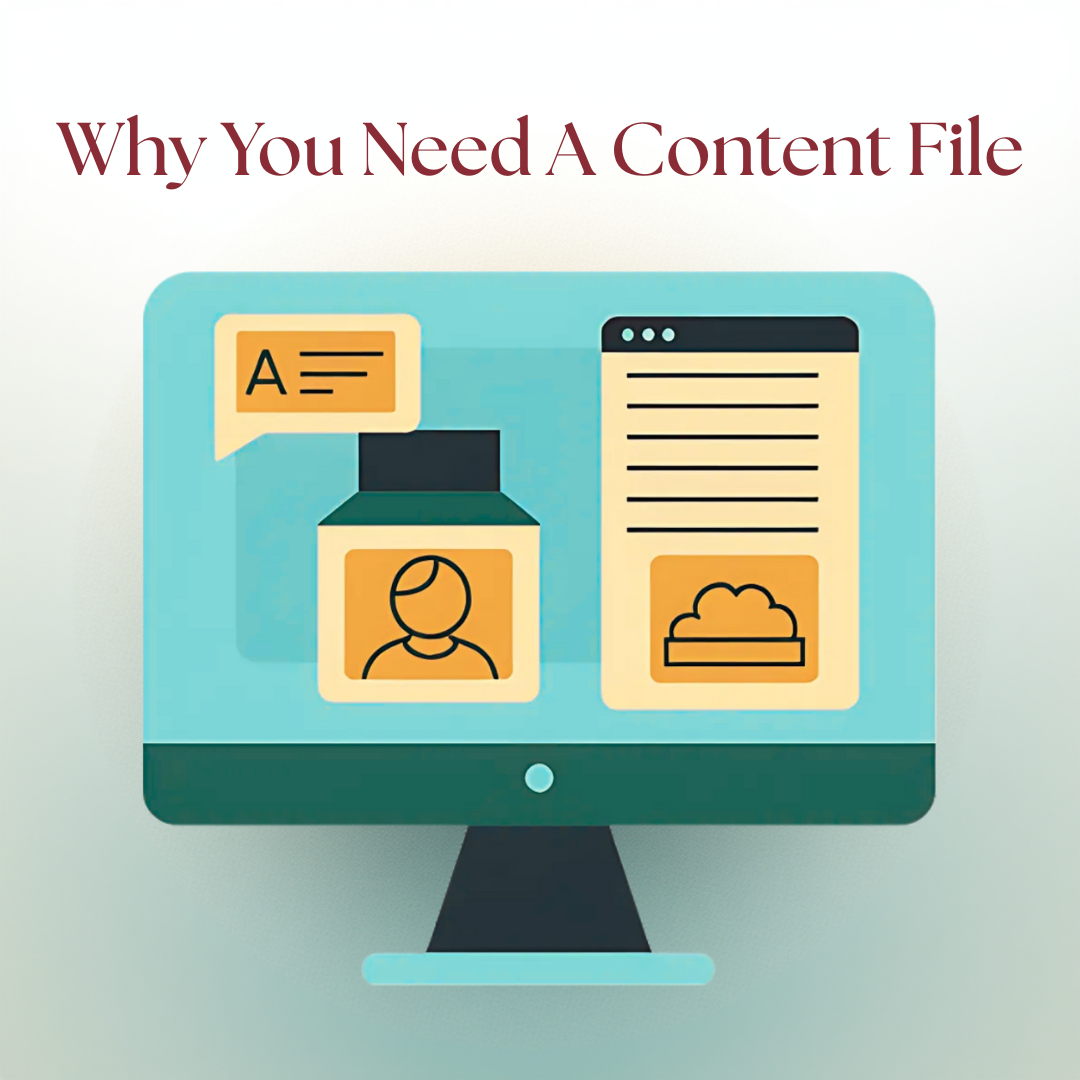You Need A Content File
“A winning effort begins with preparation.”
If you’ve ever sat down to write a donor email or social media post and found yourself staring at a blank screen, you’re not alone.
Every nonprofit fundraiser knows that content—photos, stories, quotes, stats, graphics—is the lifeblood of good communication. But when deadlines hit or your to-do list explodes, finding that perfect story or image can feel impossible.
That’s why maintaining a content file—a simple, organized home for your stories, visuals, and creative assets—is one of the best stress-saving habits you can build.
Why a Content File Makes Fundraising Easier
A content file is like your personal fundraising vault. It holds the stories, images, and snippets that bring your mission to life—so you never have to scramble for inspiration again.
When you have a content file, you can:
Work faster: No more digging through old emails or camera rolls for that one great photo.
Write better: You can pull authentic quotes and real stories instead of generic copy.
Plan smarter: You’ll spot patterns in your content and see which stories resonate most with donors.
Think of it as your secret weapon against “last-minute content panic.”
Three Simple Ways to Build and Maintain Your Content File
1. Start with what you already have.
You probably have more usable material than you realize—old newsletters, event photos, board meeting highlights, thank-you letters from clients. Gather what’s already out there and drop it into one shared folder.
Try a free or low-cost cloud tool like Google Drive, Dropbox Basic, or Microsoft OneDrive so your whole team can access it.
Pro Tip: Create subfolders like “Photos,” “Stories,” “Quotes,” “Stats,” and “Graphics.” Even that simple structure saves time later.
2. Make content collection part of your routine.
Instead of treating content gathering as a once-a-year scramble, build it into your monthly workflow.
Ask program staff to share one client story each month.
Snap quick photos at events (with permission!).
Save social media posts that performed well into your folder.
Tools like Airtable, Notion, or even a simple Google Sheet can help you track where each story came from, who’s in the photo, and when it can be used.
Bonus: Add a “story intake” form in Google Forms so staff and volunteers can easily contribute new stories anytime.
3. Tag and refresh regularly.
A content file only stays useful if it’s maintained. Set a quick 30-minute reminder every month to:
Tag new uploads (ex: “client success,” “volunteer,” “impact data”).
Delete duplicates or outdated content.
Add notes about usage rights or donor approvals.
If you use Canva, you can upload photos, logos, and templates right into brand folders—making it easy to build on-brand posts or flyers in minutes.
The Payoff
When your next appeal or campaign rolls around, you won’t be starting from scratch—you’ll have a treasure trove of mission moments ready to go.
You’ll write faster, design easier, and communicate more authentically. And maybe best of all, you’ll feel less stress and more joy in sharing the stories that matter most.
Because when you make your content easier to find, you make your mission easier to fund.
Ready to take the next step?
Create your first “Fundraising Content File” folder today—just one organized spot to start collecting the great stories you already have. A few minutes now could save you hours later.
